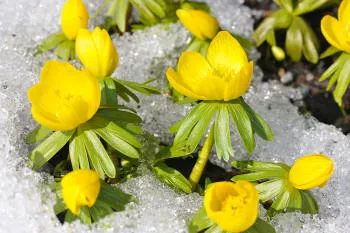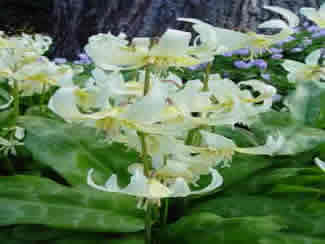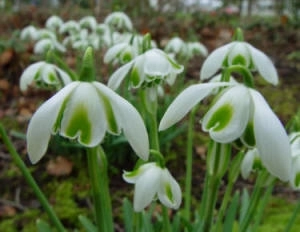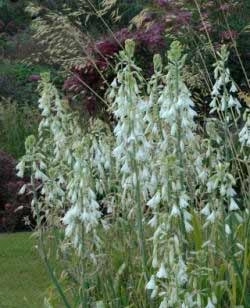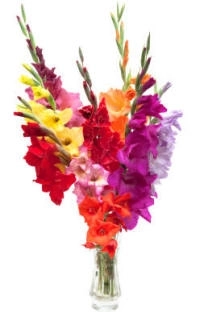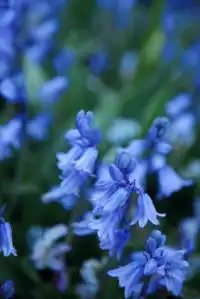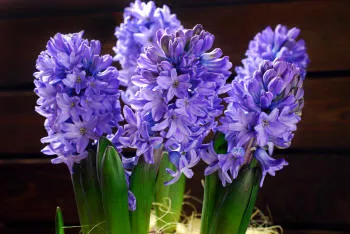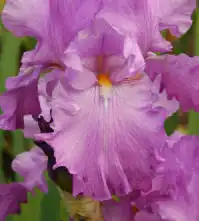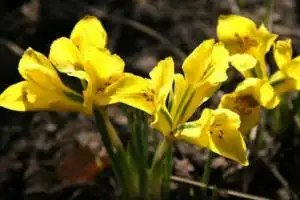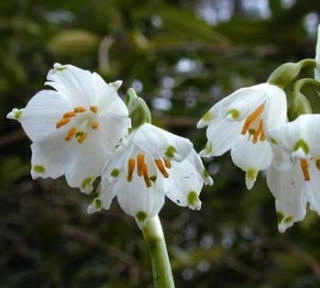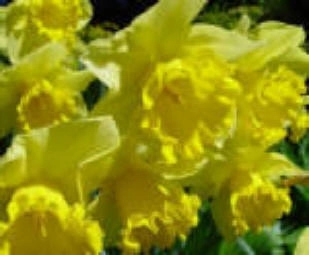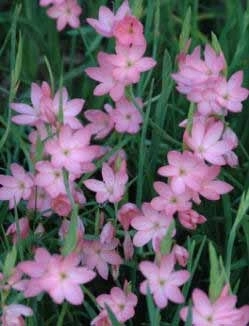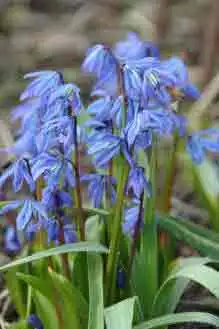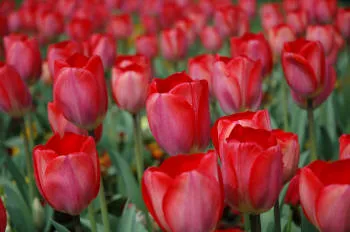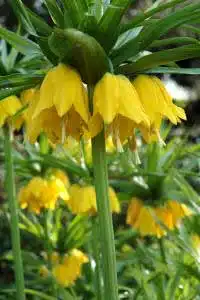
Fritillaria imperialis Lutea
The bulbs start into growth in mid spring, sending up long stems which
are topped with spectacular groups of flowers on which is a crown of
bracts (leaf-like).The flowers are grouped in 6 to 8 individual
pendulous bell shaped blooms from which droops the stamens and anthers.
They are either yellow, orange or red, and can stand to 1 metre above
ground level, though 60cm is more the norm.
They do not have a particularly nice scent, and the bulbs are quite
obnoxious in odour - especially before planting. No matter, they are
still worth planting and will grow into colourful clumps over a few
years.
They insist on having well drained soil, for the bulbs have a hollow
cup before planting, collecting any surplus moisture and being liable to
rot. Nevertheless, they should be left in the ground after planting and
blooming, and if in the right conditions - sun or light shade - will
give years of good service.
Crown Imperials are superb in a herbaceous border or beneath taller
growing shrubs with not too much overhanging growth.
Varieties of Fritillaria imperialis.
- Fritillaria imperialis
Lutea - seen in the image above. A rich golden
yellow.
- Fritillaria imperialis
- Orange flowers with characteristic drooping bells.
- Fritillaria imperialis
Prolifera is different. Other than being a good
orange red colour, it has two sets of flowers - one on top of the
other and so, has the common name of 'Crown upon Crown' Fritillaria.
Pest Problems - The two main problems of this group
are
slug attack at ground level and also on the stems. deter with slug
pellets or other means, and the invidious
Lily
Beetle. A red blighter that will soon strip foliage and flowers of
any useful meaning. Fortunately, they are bright red and easily seen -
especially in the early evening when they are out for an early supper.
Propagation of Fritillaria imperialis is best done
be dividing the mature clumps of bulbs after a few years and re-planting
where desired. This is best done in late Summer or early Autumn.
These large bulbs should be planted around 6in deep - adding plenty
of coarse grit to the planting hole.


